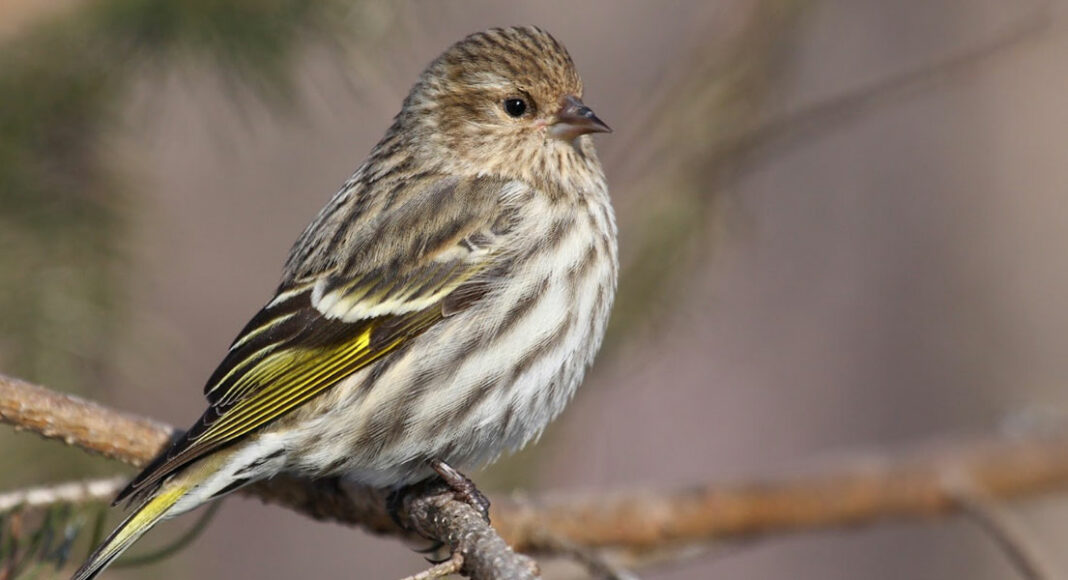Tiny brown and yellow migratory songbirds called pine siskins face their own epidemic this year, as an outbreak of salmonellosis threatens populations across the West Coast, including in Santa Cruz County.
Like Covid-19, the infection spreads quickly and easily through groups. Although not new or uncommon, the salmonellosis outbreak appears particularly large this year.
“We first started to receive reports probably mid-to-late December, and those have really increased in the beginning of January,” says Krysta Rogers, a senior environmental specialist at the California Department of Fish and Wildlife. Rogers works as an avian specialist in the Wildlife Investigations Laboratory, where researchers study diseases in animal populations around the state.
The outbreak primarily affects pine siskins, but a few other types of finches and sparrows might also fall ill if they come into contact with infected birds at feeders or birdbaths. The sick birds act lethargic.
“They often sit for long periods of time—minute to hours—in the same spot with ruffled or puffed-up feathers,” Rogers says.
The strain of bacteria is fairly specific to pine siskins, but outdoor cats might occasionally contract an infection if they grab a sick bird. Rogers recommends wearing gloves when disposing of dead birds or handling feeders. “Just to be on the safe side,” she says.
She requests that people report dead birds to the state Wildlife Investigations Lab. Community reporting helps the investigators track the numbers and locations of the outbreak.
For sick birds, Rogers suggests contacting a local wildlife rehabilitation center, such as Native Animal Rescue of Santa Cruz County. Residents should also take down bird feeders and baths for at least three to four weeks.
The outbreak will likely continue into early spring, when the finches migrate back north.
Amy Red Feather, a wildlife technician at Native Animal Rescue, advises waiting until March to put back feeders and birdbaths. Similar to closing indoor dining to slow the spread of Covid-19, taking down bird feeders limits areas of close contact where salmonellosis spreads. Birds will survive foraging naturally, Red Feather assures.
“People are worried about whether the birds are getting enough food, and it really is OK for them to be eating in the wild,” she says. “Bird feeders are real nice for us as humans, but it’s really not necessary for the birds.”
Native Animal Rescue usually takes in around a dozen sick pine siskins during salmonellosis outbreaks, but this winter they’ve already received more than thirty.
“This year has been phenomenally worse,” Red Feather says.















Thanks. I have seen a number of the pine siskins that appear ill. One I saw today appeared to have a closed eye. Others have ruffled their feathers and sat at a feeder for long periods.
I needed to fill feeder today and the one bird did not move. I probably could have caught it with my hand.
It showed no fear about my presence.
I will stop feeding today.